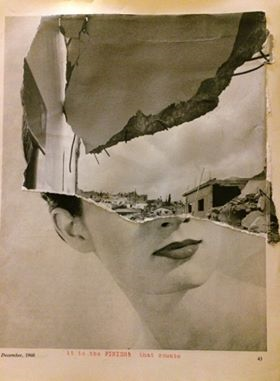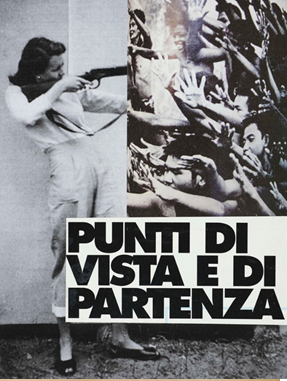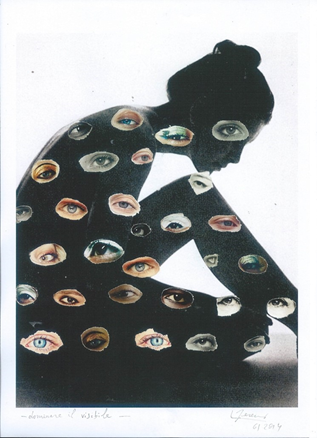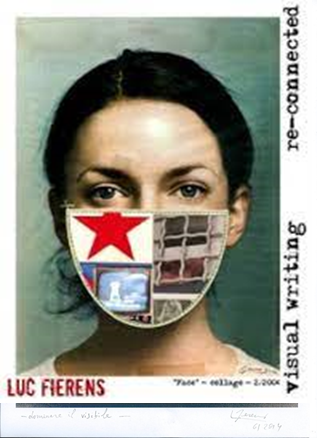-John Keats

With the dawn of genetic plethora lurking; a health pandemic viciously extending its restriction beyond endurance; German Chancellor Angela Merkel concluding her remarkably admirable sixteen-year reign of peace in Europe in a silent puff of face powder, as if nothing had happened. With Vladimir Putin depressingly stuffing himself in Mother Russia with uncomplaining oligarchic caviar from Lake Baikal, and Brexit flashing on-and-off like a deposed electric power grid short-circuited from lightning, lost in the middle of an Atlantic sea storm—one experiences dizzying spells of anxiety and astonishment in surveying the inevitable global reality of planet earth’s chances of survival. The nights are dark and dubious. The worms never sleep: their arrogance, their unbelievable insensitivity, their blatant dishonesty and ignorance. So many moral loose ends, including the stringency of morality itself. In U.S. society today, taking a life means about as much as, in other countries, taking a walk. What is the source of this partitioned insanity? It seems like “we”—all that is known with any certainty of “dangerous” masked humanity paddling up the infinite gloom of the universe—with our continually disrespected, past-due “civilization” in tow—are like abandoned children in a desperate “world” without limits or limitations, without history, without form or purpose, without consideration, without order, without belongings, destination, telos, sustaining life or light—whose existence is apparently always only determined in the retrospective virtual outline of its having been taken completely for granted. Everyone awaits news of the outcome. No realities, only slippery relativities—and relatives and regressive uncouth rover boys, “on the threshold of discovering a new dimension” and with “peculiar goals”:
Philosophy, whose vocation is to teach us how to carry on the eternal work of humanity, is utterly incapable of teaching in an objectively valid manner.
Edmund Husserl first published those words in German in 1936 on the occasion of moronic de facto fascist war-causing despot, Adolf Hitler, being instated as German Chancellor.
Under fascism, the exterior picture is always apodictically upside-down: order is chaos, value is worthlessness, real is false, positive activity hides negative intent, reassurance is murderousness, marriage is divorce, leaders are incompetent in everything except destruction, and no one remembers what the sacred teachings are! Under fascism, the distant water wells have all vanished, and the accessible ones are poisoned with literalism. The blind luck of the draw—the tear of a page, the careless word, the anarchy of cursive marks, the unintelligibility of a metaphor, the catastrophe, the foolish mistake—glimpses the Mexican border of liberation. Everybody’s presumed sense of values leads them into the “new” man-made desert even as they diligently and appropriately begin a search for “green pastures.” No one has a clue where they or we or she or “them” or “it” is going. “It concerns the ideal limit of an infinite transgression, not the factual limit of the transgressed finitude” (Derrida). The problem is systemic not isolated. Predictably, once again humanity encounters itself as its worst albeit only enemy. Under fascism, the misguided adamant search for absolute peace and prosperity leads society into the most monstrous of atrocities and wars.
No doubt the “teacher”—the artist—has a difficult task: the artist must attempt a discernment of the direction that societies and all society is going: the artist seeks “a total form encompassing all forms, and this form is idealizable…” (Husserl). The artist carries great responsibility, a responsibility of justice and judgment. The artist judges in the fog of what has not yet taken shape: namely the invisible uncreated outcome, the ultimate unknown of the obscure ramshackle entirety that lies far down the road—bearing the seductive heritage of a remote undeciphered past. It’s in this invisible immanence that the themes and strains of reality are found, the reality of a new and unexpected totality. Reality is connected with both the “I” and the “Other.” But, at the same time, reality constitutes a disconnection from the “I” and the “Other.” Being is a solitary separation from what is known and what is comprehended. Being is singularity and consciousness, that is, an exalted state of anticipation and not-knowing.
The sole possibility in being of going beyond the straight line of the law, that is, of finding a place lying beyond the universal, is to be I (Levinas).
The Art of the Collage
Artists, politicians have a fondness for the word “unity.” But, in the art of collage, totality is beyond unity. Totality is made up of a vibrant, arbitrary assemblage of a multiple assortment of well-recognized and already highly accepted unities and parts of unities. To be sure, we are aware of a driving force from life’s beginning. But the reality of collage is a new beginning, beyond factuality, beyond a particular idea, beyond the artist’s opinion and understanding, beyond present peace and contentment, beyond a particular language, beyond a particular tradition, beyond a particular place. In the words of critic and fellow artist, Geof Huth, “[Luc Fierens’] method of production is collage, a particular brand of verbo-visual collage that makes its points by abrupt collocations of disparate fragments of image and word.” The art of collage creates a new unrecognizable unity formed from lesser unities or even disunity—a sublation. The art of Luc Fierens’ collage strives for a portrayal of this illuminating transitional disjunction rather than the eventual unity that is achieved—a surpassing totality of a more applicable insight somewhere outside strict cause and effect, a deeper reality characterized more by “truth” than concrete confirmation, more by authenticity rather than linear visibility—as Vandana Shiva asserts, a reality that returns to a primitive state of unity.
Things are not joined together by a process of continuity or interiorization, therefore, but instead they rejoin above and beyond the breaks and discontinuities (mutation) (Deleuze).
With collage, the artist cuts-up fragments of the most common material—popular photos, topical visual clichés, oceans of familiar headlines and newsprint, tawdry advertisements—and quickly, unimposingly stirs them together in a glue pot of poetic and recorded artwork, an amazing, spontaneous, libidinal portrait of a beautiful new creative fabric and social freedom. Collage is the arbitrary, liberating unity of anything and everything. It is an “historical movement” through “universal knowledge.”
For the primal establishment of the new philosophy is, according to what was said earlier, the primal establishment of modern...humanity itself—humanity which seeks to renew itself radically... (Husserl).
**

In 2019, the Berardelli Foundation in Brescia, Italy, put together a retrospective exhibit of Poesia Visiva (Visual Poetry) and verbo-visual collage of Belgian avant-garde artist Luc Fierens, one of the most actively networked visual poets and collage artists, on the international art scene today. The exhaustive two-hundred-page, 12 X 9 inch catalogue of the exhibit includes reviews, interviews and commentaries on Fierens’ work, in Italian, French and English, along with hundreds of photographs of Fierens at work with curators, and other artists, including performances, and with samples from the early 1980s till 2019 of Fierens’ visual poems all from the Berardelli collection, most of them in color on laminated paper. Both the catalogue and the exhibit appear under the title Punti Di Vista E Di Partenza—Points of View and of Departure. The collection begins with referencing Fierens’ early life in the village of Hombeek and the city Mechelen, Belgium, his initial interests in Fluxus, visual writing, mail art and collage. And it concludes with a bibliography of published works and publications. Recently, much of Fierens’ new work has appeared online on Facebook and Instagram and in some magazines in France (Ouste, Doc(k)s) and Italy (Utsanga, BAU and Neutopia) and in collabs with Jim Leftwich, Stefan Brandstifter published by Redfoxpress, and with other artists, such as the publication 10-4 with Hungarian/Italian artist Adriana Kobor and an unfinished collaboration with U.S. visual artist, David-Baptiste Chirot. In the U.S., Fierens is also known for his early Mail Art.
– quoted from KOLAJ MAGAZINE ONLINE
“Luc Fierens’ work is remarkably...inserted in this epochal pulse, since it unfolds the collection and accumulation of images, the perpetual combination of fragments that reveal a more or less violent collision of meanings. In the realm of this artist, the collage technique is radicalized both in its material and conceptual expression: its fragment[ing] poetics allows to seize loose pieces of history and subject them to a new configuration that distorts the uni-vocal senses, and that slides them towards areas of disturbing uncertainty, both lucid and ominous....
“One of the most recurrent procedures by the artist consists in the clash of opposites, in the unusual encounter between visions that are conceptually rejected or excluded. Thus, the images of beauty linked to the female body or the nuance of eroticism are juxtaposed and equalized at the same level of significance with the images of historical violence and the summoning of the vulnerability of the human condition.
Silvio De Gracia, 2019
...This problem is one of dialogue, in the sense that a society based on mass culture can no longer be addressed by those that are absorbed in the arts....
...the work of art has become a product that, following the example of everything else, is destined to be exhibited as window-dressing to be consumed in an environment that strives to be completely impersonal, homogenous and quantitatively large...
...emancipated from the static “art object” to become a dynamic model of processes...
...The strong force of this phenomenon is tied to a media-ization larger than society and also larger than art, and the obstruction of the “open work”…
This communication, likewise, forms the basis of the creative artistry of Luc Fierens. He expresses his mode of functioning in life through a series of projects and visual poems that do precisely what he wants them to do: communicate and exchange his reflections with others,…
Luc Fierens selects from vastness and registers the signs and codes of his epoch as a medium that attempts to be easily accessible and identifiable. He utilizes the technique of accumulation and (de)constructs the fragments that form a new plastic unity In the final analysis, behind this idea is hidden the hope that art will be able to change society. Drawn from Dadaism and Surrealism by means of formal and relevant realizations, containing them dawn also from visual poetry, ideologically near to Fluxus, punk and underground, Fierens has inscribed himself entirely in the tradition of the international avant-garde.
[Quotes from Jan De Vree, Anvers, Octobre 2004. Originally in French, translated into English by Tom Hibbard and published in the Berardelli exhibit catalogue in English p.14.]
**
Erotic Consciousness

The persistent artistic undertaking in collage and related avant-garde art forms that is the highly individual history of Luc Fierens has involved many people, many places around the globe and a span of a number of years. It’s an aspiration strongly motivated from the beginning in a longing for escape from normative behaviors and repetitious goals in hopes of entering a realm of untainted new ideas and the rarified atmosphere of freedom-inspired life rewards. Fierens’ art is deeply implanted in the fertile non-aristocratic, Reformation Belgian earth of relevance and “individual human existence,” with an intent of reaching universal origins that preserve the imperiled empty spaces of meaning and contemplation and egalitarian openness—less war and more self-determination. From out of unique experiences, signs, words, subjective travels and “journeys,” Fierens maps a “dislocated” passageway of idealities and destinations, sufferings and triumphs, participatory understanding and knowledge intended as helpful and lasting for everyone: “a One and a Whole that would not be the principle but, on the contrary, ‘the effect’ of multiplicity and of its disconnected parts” (Deleuze). Among the images often found in Fierens’ many collages are protest, war-torn nations, politics, destruction of buildings and cities, people, natural landscapes, urban structure, soldiers, racial bias, men in various dire social and economic situations—not forgetting “visual writing” as it associates with handwriting, news media, archeology, communication, education, diverse languages, interconnection, varying circumstances and sets of ineffable linguistic signs.

Without doubt Fierens’ work contains erotic imagery. And sexuality and sexual repression are definitely a major theme. To the point of his predominant use in his collages of the female image, I think there is much that is worth saying on this subject. In the first place, Fierens has many collages that do not contain images of women. Perhaps the reason for the seeming fixation on the female image in his collage work is that, in frankness, it constitutes a starting point most popular and absorbing. Collage art is dream-like in that the images in it are incoherent and suggestive and not whole or detached. A semi-erotic picture of a bare female shoulder juxtaposed with a war scene or a dust storm or a pair of red lipstick-covered lips or a new car or, for instance, a distant mountainous terrain, evokes an interesting message concerning the happenings, thoughts and realities of culture and political reform interconnected with human impulses and needs. In the terminology of chaos theory, sexuality—the erotic female image—disperses “determinateness” and “periodicity” and revitalizes a sense of possibility as it indicates a path toward the future. To say the least, knowledge and experience are gained from the sensual and sexual encounter. Sexuality is the engine of individuality.
[Shapes and ideas] fill out (sensibly intuited) space-time, which is their form. Each shape in this open infinitude, even if it is given intuitively in reality as a fact, is still without “objectivity”… (Husserl).
The object itself has no import. One is pulled into perceiving that confusion and uncontrolled movement are an unavoidable and natural state of human understanding—and language, an equivocal language of discovery and difference and imagination: since literalism and unambiguous language, used in “applied” circumstances, have no meaning. Only inquisitive, finite and multiple language is capable of conveying meaning.
In his book Eroticism, George Bataille begins with pointing out that
Human eroticism differs from animal sexuality precisely in this, that it calls inner life into play. In human consciousness eroticism is that within man which calls his being in question.
This “calling into question” is the modality of Fierens’ visual writing and collage art. Not only does eroticism create moral consciousness—the main inspiration of art of all sorts—thus invoking such fundamental, “eternal” ideas as accountability, responsibility, restraint and self-perpetuation, but it also references morality and social mores in a way that brings up the complicated problems of alienation and existence. The female image is traditionally one of the most controversial subjects in society and culture and points the artist in just about any direction he or she chooses to explore. Bataille notes that eroticism relates to “transgression,” “disorder and rule-breaking,” “what is,” “ecstasy,” “truth,” “violence” and prohibition. The erotic image introduces what Deleuze describes as “the unconscious themes, the involuntary archetypes in which the words but also the colors and the sounds, assume their meaning and their life.” Art in itself is erotic. Out of the subjective awareness of sexuality vast fields of learning and advancement arise. Probably the two most recognizable artworks that Fierens has produced in his career are quasi-feminist quasi-erotic images concerning verbal repression and formidable sexual self-consciousness—Face 2004 (above) and Dominare il visible 2014 (similar to Parlare di cuore 2014).
All human emotion takes a circuitous transformational path to its exterior appearance. Luc Fierens’ artworks do not end where they begin. Man-made infrastructure gradually reveals an inherent purpose and meaning. Identity surfaces only in the obscurity of broken pieces. It could be stated that, in a Capitalistic society, the female image is a starting point for the discourse of communication and interaction versus atrocity and unreality. Form and visibility are subjects in art that the artist often feels the impulse to contest or contrast. Form and visibility are easily construed as obstructive, dominating and associated with materialism to such an extent that they convey the extremes of deception, “the wall,” the abyss, non-being, falsification and death. It’s form and visibility that the collage artist—the artist of any style—is intent on deconstructing in the search for sources of hidden unmistakable lasting worth. Collage is the impulsive, improvisational search for fundamental values that visibility tends to obstruct and misrepresent; collage creates a naked reality outside of unilateralism and commercialism. Luc Fierens’ collages do not portray a unity; they portray a disunity that forecasts a future meaning. Creating and uncovering the enduring basic values of society, general ideas as opposed to marginalization, substantive impressionism rather than sickly, empty formalism is the purpose of art and language—for the language that we depict in visual artworks of letters and signs does not reach for an absolute certainty of the Law but for an artistic and linguistic certainty that has true significance in connection with human activity.
**
The artworks in Fierens’ catalogue begins around 1986—and I’m sure earlier. The publications in which his work appeared from an innocent high school beginning all the way until recent years include all sorts of fonts, styles, viewpoints, layouts, labels, mostly obscure, out-of-the-way and Xerox, assemblages, chapbooks, visual poetry magazines, Black Poems and small press. Fierens has learned his artistic trade in the tradition of a long laborious life project with important lessons and junctures awaiting at every bend in the road. Traveling to collectors’ art festivals and book fairs in Italy, corresponding with many artists across the United States, Japan and Europe, serving a brief artist-in-residence in Venice, Italy, and Buenos Aires, Argentina, Fierens brings a multiple and reliable perspective that is healing and helpful in the obviously radically wild, ever-moving global landscape of art, life and memory.
Artworks1. Finish 2019, Luc Fierens
2. Punti di vista e di partenza 2013, Luc Fierens, ©Fondazione Berardelli
3. Dominare il visible 2014, Luc Fierens ©Fondazioen Berardelli
4. Face 2004, Luc Fierens